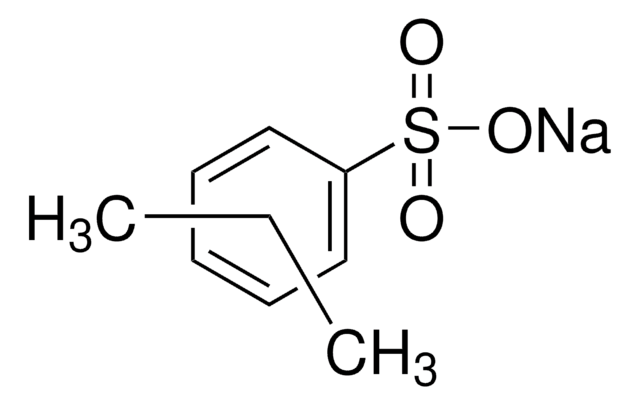267244
Platinum
foil, thickness 0.025 mm, 99.9% trace metals basis
Synonym(s):
Platinum element, Platinum gray
Sign Into View Organizational & Contract Pricing
All Photos(1)
About This Item
Empirical Formula (Hill Notation):
Pt
CAS Number:
Molecular Weight:
195.08
EC Number:
MDL number:
UNSPSC Code:
12141734
PubChem Substance ID:
NACRES:
NA.23
Recommended Products
Assay
99.9% trace metals basis
form
foil
resistivity
10.6 μΩ-cm, 20°C
thickness
0.025 mm
bp
3827 °C (lit.)
mp
1772 °C (lit.)
density
21.45 g/cm3 (lit.)
SMILES string
[Pt]
InChI
1S/Pt
InChI key
BASFCYQUMIYNBI-UHFFFAOYSA-N
Related Categories
General description
This platinum foil is a thin sheet of platinum with a thickness of 0.025 mm and high chemical purity. Platinum is a dense, silver-white metal that is highly resistant to corrosion and has a high melting point. Platinum is a precious metal that is valued for its rarity and chemical stability, and is often used in jewelry, coins, and other decorative objects. In material science, it is often used as electrodes in fuel cells, batteries, and other electrochemical devices, as a substrate for electroplating, and as an inert crucible or dish among other applications.
Application
Platinum foil can be used for a variety of applications such as:
- growth of high crystalline boron nitride (BN) material for UV optoelectronic devices.
- fabrication of electrochemically stable microelectrode arrays
- a counter electrode for the fabrication of supercapacitors
- an enzyme electrode probe for potential usage in biosensors
Quantity
350 mg = 25 × 25 mm; 1.4 g = 50 × 50 mm
Storage Class Code
13 - Non Combustible Solids
WGK
nwg
Flash Point(F)
Not applicable
Flash Point(C)
Not applicable
Certificates of Analysis (COA)
Search for Certificates of Analysis (COA) by entering the products Lot/Batch Number. Lot and Batch Numbers can be found on a product’s label following the words ‘Lot’ or ‘Batch’.
Already Own This Product?
Find documentation for the products that you have recently purchased in the Document Library.
Customers Also Viewed
Pt based enzyme electrode probes assembled with Prussian Blue and conducting polymer nanostructures
Curulli A, et al.
Biosensors And Bioelectronics, 20(6), 1223-1232 (2004)
Electrodeposition of nickel hydroxide films on nickel foil and its electrochemical performances for supercapacitor
Fu GR, et al.
International Journal of Electrochemical Science, 4(8), 1052-1052 (2009)
Yao-Hsuan Tseng et al.
Biochimica et biophysica acta, 1830(6), 3787-3795 (2013-04-02)
Traditional antibacterial photocatalysts are primarily induced by ultraviolet light to elicit antibacterial reactive oxygen species. New generation visible-light responsive photocatalysts were discovered, offering greater opportunity to use photocatalysts as disinfectants in our living environment. Recently, we found that visible-light responsive
Tao Xiong et al.
Journal of biomedical nanotechnology, 9(2), 274-280 (2013-05-01)
Noninvasive molecular fluorescence imaging in vivo which combines Optical imaging with genetic marker technology can real time monitor the development of tumor, through the use of human adenoid cystic carcinoma cell (ACC-M) and lung carcinoma cells SPC-A1 were thansfected by
Hiroaki Akamatsu et al.
Japanese journal of clinical oncology, 43(6), 664-668 (2013-04-16)
Interstitial lung disease associated with gefitinib is a critical adverse reaction. When geftinib was administered to EGFR-unknown patients, the interstitial lung disease incidence rate was approximately 3-4% in Japan, and usually occurs during the first 4 weeks of treatment. However
Our team of scientists has experience in all areas of research including Life Science, Material Science, Chemical Synthesis, Chromatography, Analytical and many others.
Contact Technical Service




